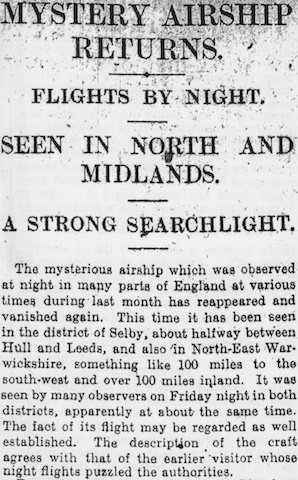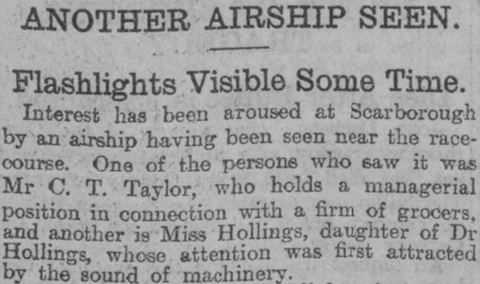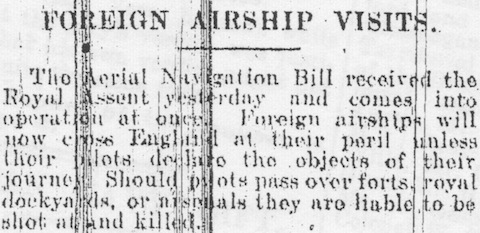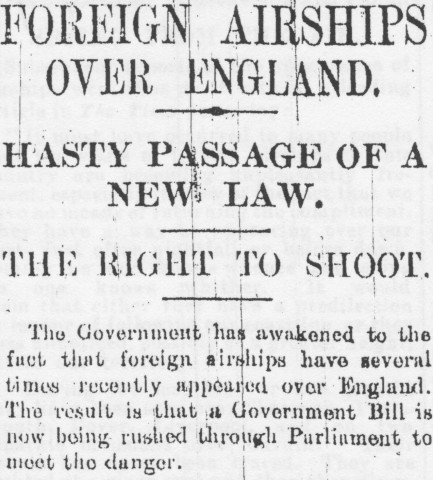
The phantom airship scare has clearly entered a new phase since the sightings last Friday in Yorkshire and Warwickshire. Several major London dailies -- all politically conservative -- devote substantial amounts of column space to the mystery; half the main news page, in the case of the Standard. Only it's not regarded as a mystery any more. For example, the Standard's military correspondent says (p. 9; above):
There is not the smallest doubt but that this country at the present moment is the object of a systematic aerial reconnaissance carried out at night. Carried out by whom? it will be asked. There is only one answer to that question -- by Germany, because Germany alone possesses aircraft capable of doing what is being done by the airships that have been seen over England.
After explaining the numbers and capabilities of the Zeppelins, the correspondent goes on to argue that
By these nightly trips to our shores the Germans have made a certainty of being able to sail to any point in England within a given time. They have marked the ranges, as it were, and the vessels of a fleet of Zeppelins sent upon an errand of destruction would arrive at their various destinations with the certainty and punctuality of an express train.
The situation, then, is this: Within eight hours, at most, after the making of a signal in Berlin anything between 40 and 100 tons of high explosive could be dropped simultaneously at twenty different selected points in England. Within that short space of time, the whole of our arsenals and dockyards could be laid in ruins, and if our warships escaped, which is unlikely, the offensive power of the Fleet would be hopelessly crippled. And as matters stand we have absolutely no means of resisting such an attack, even if we had warning of it; therefore the attack would inevitable succeed.
The Standard's leading article (entitled 'The airship peril') backs its military correspondent, and adds that it is 'imperative that we should make the most energetic exertions to raise our air fleet above its present meagre proportions' (p. 8). Still it suggests that 'it is not exactly polite for foreign Governments to authorise these espionage flights over our soil' and warns that 'It would be a very "awkward incident" indeed if a Zeppelin hailing from Friedrichshafen or Johannisthal were brought to earth by a shell from an English gun'.
...continue reading








